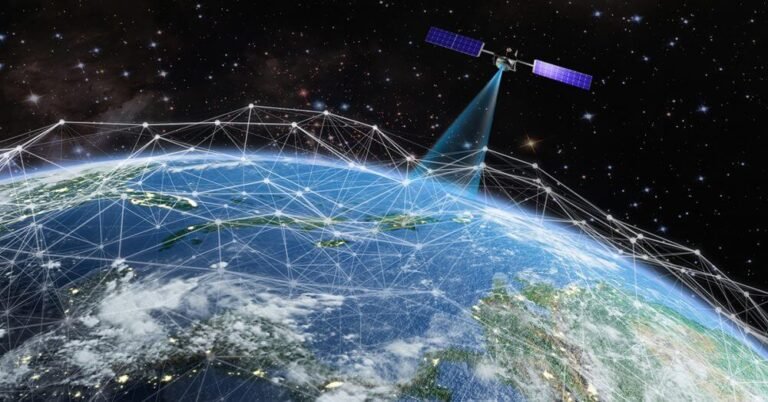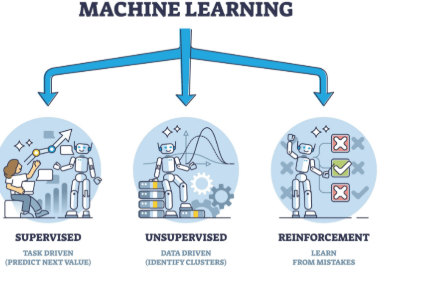Introduction
The internet has become the backbone of modern life, driving communication, commerce, education, healthcare, and innovation. Yet, billions of people across the globe remain unconnected due to geographical barriers, inadequate infrastructure, or high service costs. Traditional broadband—delivered through fiber optics, DSL, or mobile towers—often fails to reach remote, rural, and underserved areas.
This is where satellite internet steps in as a game-changer. By leveraging satellites orbiting the Earth, it provides connectivity far beyond the reach of conventional terrestrial infrastructure. In recent years, technological advancements such as Low Earth Orbit (LEO) satellite constellations have revitalized interest in satellite internet, making it faster, more reliable, and more affordable than ever before.
This article explores satellite internet in detail: its working, history, benefits, challenges, major players, real-world applications, and its potential to transform the future of global connectivity.
What is Satellite Internet?
Satellite internet is a type of broadband connection that uses satellites in Earth’s orbit to deliver internet services. Unlike fiber or DSL, which rely on ground-based cables, satellite internet beams data from Earth to a satellite in space and then back down to a ground station and user terminals.
- User terminal (dish antenna + modem): Installed at the user’s location to send and receive signals.
- Satellite in orbit: Relays data between the user and the internet backbone.
- Ground station (gateway): Connects satellites to the global internet infrastructure.
Evolution of Satellite Internet
- First-Generation (Geostationary Satellites – GEO):
- Operate at ~36,000 km above Earth.
- Provide wide coverage but suffer from high latency (~600 ms).
- Examples: HughesNet, Viasat.
- Second-Generation (Medium Earth Orbit – MEO):
- Operate at ~8,000–20,000 km.
- Lower latency than GEO but require fewer satellites than LEO.
- Example: O3b Networks.
- Third-Generation (Low Earth Orbit – LEO):
- Orbit between 500–2,000 km.
- Low latency (~20–40 ms) comparable to fiber.
- Requires thousands of satellites for global coverage.
- Examples: SpaceX Starlink, OneWeb, Amazon Kuiper.
How Does Satellite Internet Work?
- User sends a request (e.g., opening a webpage) via satellite dish.
- Signal travels to the satellite in orbit.
- Satellite relays signal to the nearest ground station.
- Ground station routes the request to the internet.
- Data is sent back through the same path to the user.
Thanks to LEO advancements, the round-trip signal time is drastically reduced, making video calls, gaming, and streaming smoother than before.
Advantages of Satellite Internet
1. Global Coverage
Unlike fiber or cellular towers, which are limited by geography, satellites can cover every corner of Earth, including remote islands, deserts, and mountains.
2. Quick Deployment
Building fiber networks in rural or mountainous areas can take years and cost billions. Satellite networks can connect such areas with minimal ground infrastructure.
3. Disaster Resilience
When natural disasters damage fiber lines or towers, satellite internet can keep emergency services and affected communities online.
4. Bridge the Digital Divide
Billions of people in rural areas lack internet access. Satellite broadband offers them educational, financial, and health opportunities.
Challenges of Satellite Internet
1. High Initial Costs
Launching satellites into orbit is expensive. Constellations like Starlink involve thousands of satellites, each costing millions.
2. Latency (GEO systems)
Traditional GEO satellites suffer from noticeable lag, making online gaming and real-time video conferencing difficult.
3. Space Debris Concerns
Thousands of LEO satellites raise fears of space congestion and collision risks. Organizations like the UN and space agencies are drafting regulations for safe disposal of defunct satellites.
4. Weather Sensitivity
Heavy rain, storms, and snow can weaken satellite signals, leading to reduced performance.
5. Affordability
Though prices are dropping, satellite internet may still be more expensive than terrestrial broadband, particularly in developing countries.
Major Players in Satellite Internet
🌌 SpaceX Starlink
- Currently the largest LEO satellite internet provider.
- Over 6,000 satellites in orbit (as of 2025).
- Offers speeds between 50–250 Mbps.
- Expanding coverage to rural areas in Africa, Asia, and South America.
🌐 OneWeb
- Backed by UK government & Bharti Enterprises.
- Focus on global enterprise and government connectivity.
🛠 Amazon Project Kuiper
- Amazon’s ambitious plan to deploy 3,000+ satellites.
- Aims to provide affordable broadband in underserved regions.
🚀 Other Initiatives
- Telesat (Canada) – LEO satellites for enterprise customers.
- China’s Guowang project – A state-backed mega-constellation.
- Iridium & O3b – Specialized MEO and niche satellite services.
Real-World Applications
1. Rural Connectivity
- Villages in Africa, South Asia, and Latin America use satellite broadband to access online education, e-commerce, and healthcare.
2. Disaster Relief
- During earthquakes or hurricanes, satellite terminals are deployed for emergency communications.
3. Military & Aviation
- Armies use satellites for encrypted communication.
- Airlines provide in-flight Wi-Fi through satellite connections.
4. Maritime Industry
- Ships use satellite internet for navigation, safety, and crew welfare.
5. IoT & Smart Agriculture
- Farmers in remote areas use IoT devices connected via satellites to monitor crops and livestock.
Future of Satellite Internet
- Integration with 5G/6G:
Satellite internet will complement terrestrial 5G and upcoming 6G networks, creating seamless global connectivity. - Affordable Global Access:
With competition among providers, costs are expected to fall, bringing satellite broadband within reach of more households. - AI-Powered Satellite Management:
Artificial Intelligence will optimize satellite orbits, reduce collisions, and improve data routing. - Sustainable Satellites:
New designs will include self-disposal technology to reduce space debris. - Expanding Applications:
Satellite internet will play a role in autonomous vehicles, remote telemedicine, online education, and even deep-space communication.
Conclusion
Satellite internet is not just a technological advancement—it is a social equalizer. By bringing connectivity to the unconnected, it bridges the digital divide, fosters global economic growth, and ensures that no community is left behind in the digital era.
While challenges such as cost, latency, and space debris remain, rapid innovation in LEO satellites, reusable rockets, and smart regulations are paving the way for a more connected future. With Starlink, OneWeb, Amazon Kuiper, and other players racing to deploy mega-constellations, the dream of affordable, high-speed, global internet access is closer to reality than ever before.
In the coming decade, satellite internet will not only transform how people connect—it will redefine what it means to live in a truly connected world.



